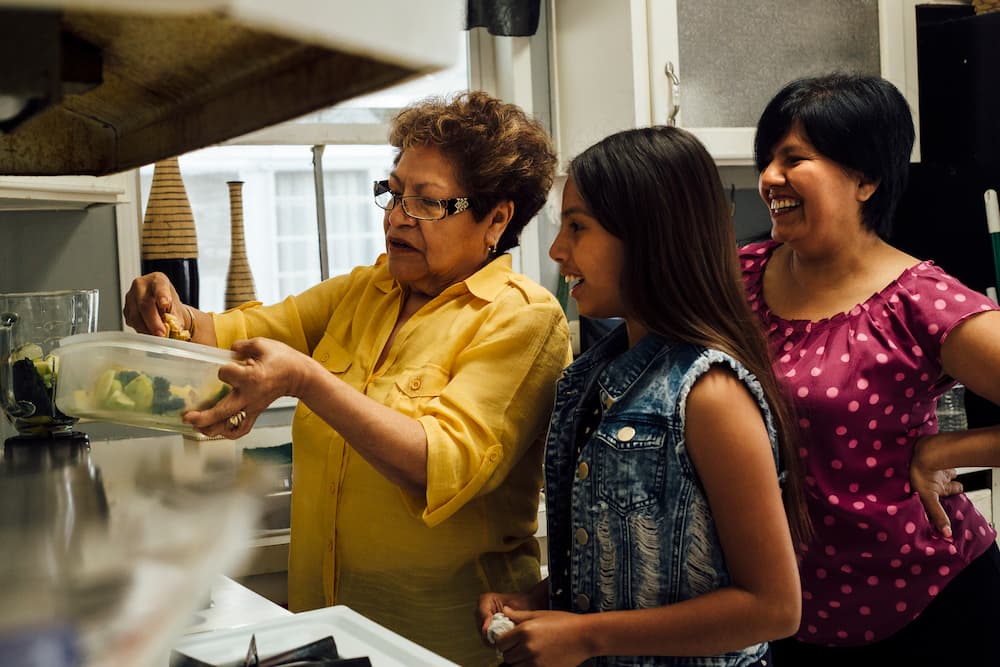For Latinas, family has never been just a word. It has always been our anchor, our first community, the place where love and duty blur into one. Family was where abuelas ruled kitchens with quiet authority, where tías showed up unannounced but always bearing food, where cousins felt more like siblings and neighbors were often treated the same. Our understanding of who belongs has always been generous. But today, a new generation of Latinas is expanding that definition even further—reshaping what family looks like while holding onto the spirit that has always made it sacred.
Blended households are one way this change is visible. Divorce, remarriage, and migration have created homes where step-siblings share bedrooms and multiple last names gather around the same table. These families may not look like the ones our grandmothers grew up in, but they carry the same heartbeat of love, sacrifice, and responsibility. What once might have been seen as “broken” is now recognized as whole—different, yes, but just as legitimate.

Chosen families are another redefinition. For many Latinas navigating independence, moving away for school, or living in cities far from relatives, friends have become kin. They are the people who celebrate birthdays, who show up in emergencies, who raise children together across households. For LGBTQ+ Latinas, chosen families are often the first spaces where their identities are embraced fully, without judgment. This expansion of family is not a loss of tradition but a continuation of it: we have always made room at our tables, always treated friends like family. We are simply naming it now.
Intergenerational living, once considered a sign of economic limitation, is being reclaimed as a strength. More Latinas are choosing to live with parents, grandparents, and children under one roof—not only for financial reasons, but for cultural and emotional ones. Grandparents pass down language, recipes, and stories that root children in identity. Adult daughters support aging parents while building their own careers. In these homes, care flows in every direction, weaving resilience into daily life. What mainstream culture often dismisses as “crowded” or “old-fashioned” is, in truth, a model of sustainability and connection.

With these shifts come new negotiations of gender roles and independence. A younger generation of Latinas is questioning the expectation that women alone must hold families together. Partners are expected to share childcare and housework. Daughters are choosing careers before marriage, or sometimes instead of it. Sons are learning that family leadership is not dominance but presence. And still, the essence of family—its loyalty, its warmth, its ability to show up for one another—remains intact.
The balance is delicate. We are the inheritors of traditions that taught us family is everything, and we are the architects of a future where family can mean many things at once. Independence does not erase tradition; it reshapes it. The Latina who lives alone in a city, the couple raising children together outside of marriage, the household that spans four generations—all are expressions of the same truth: family is where we find belonging.

What makes this moment powerful is that Latinas are leading the way in saying there is no single blueprint for family. We are proving that strength can be found in blended homes, in chosen kinships, in intergenerational circles. We are showing that independence and tradition can coexist—that we can honor where we come from while building what we need today.
The next generation will inherit this wider definition. They will grow up knowing that family is not about fitting into one mold but about creating bonds that sustain us. And in that truth, they will recognize what we have always known: family is not only who we are born to, but who we love, who we care for, and who shows up when we need them most.
Latinas are not abandoning the cultural importance of family. We are expanding it. And in doing so, we are not just redefining family for ourselves—we are redefining it for the world.













